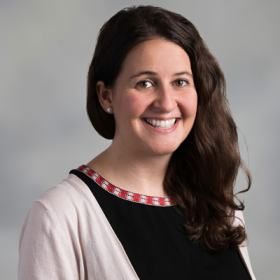Commentary
Video
Using Social Listening Analyses to Better Characterize Patient Experiences With Narcolepsy: Anne Marie Morse, DO, FAASM
Author(s):
The pediatric neurologist and sleep medicine specialist at Geisinger Medical Center discussed a presentation from SLEEP 2024 highlighting the impacts of narcolepsy and how patients try to mitigate their symptoms. [WATCH TIME: 5 minutes]
WATCH TIME: 5 minutes
"Part of the challenge that we see in the field when we’re talking about patients with narcolepsy is that there’s a lot of underestimation of what individuals are actually experiencing. One of the things I’m passionate about is always personalizing therapies and being able to understand that the words that individuals are using is critical, because when I’m using my own words, I’m applying a lexicon that may not be relevant or even what the patient is actually saying."
Narcolepsy is a chronic, life-long neurological disorder that interferes with a person’s daily sleep cycle and wakefulness. Primarily influenced by the REM and non-REM sleep cycles, narcolepsy is distinguished by episodic daytime sleepiness and nighttime wakefulness, as well as sleeping difficulty. This disorder, which affects people of all ages, is also typically characterized by abnormally rapid eye movement, cataplexy and mild muscular weakness, all of which lead to body collapse or paralysis.
Using the MyNarcolepsyTeam social network, a recent study asked patients with narcolepsy (n = 110) to describe the condition in their own words to better characterize the struggles and unmet needs they face. Presented at the 2024 SLEEP Annual Meeting, held June 1-5, in Houston, Texas, the study featured 110 respondents, 31% of which reported that the time from symptom onset to diagnosis was greater than 10 years. Additional findings showed that almost half (43%) of respondents reported pain as a comorbidity, 90% of respondents reported excessive daytime sleepiness, and 81% also reported sleep disturbances.
Lead investigator Anne Marie Morse, DO, FAASM, sat down with NeurologyLive® at the meeting to discuss the reasons behind conducting the study and the value a listening analysis brings clinicians who treat patients with narcolepsy. Furthermore, she highlighted the major topline findings from the study and the significance they hold, including some of the misdiagnoses and missed diagnoses. In addition, Morse described some of the specific phrasing patients used, the role of cataplexy in daily function, and how cataplexy may be impacting other aspects of dysregulated sleep.
Click here for more coverage of SLEEP 2024.
REFERENCE
1. Morse A, Lavender M, Horsnell M, et al. Understanding the debilitating nature of narcolepsy in patients’ own words: a social listening analysis. Presented at: 2024 SLEEP Annual Meeting; June 1-5; Houston, TX. ABSTRACT 0657
Newsletter
Keep your finger on the pulse of neurology—subscribe to NeurologyLive for expert interviews, new data, and breakthrough treatment updates.
2 Commerce Drive
Cranbury, NJ 08512
All rights reserved.




